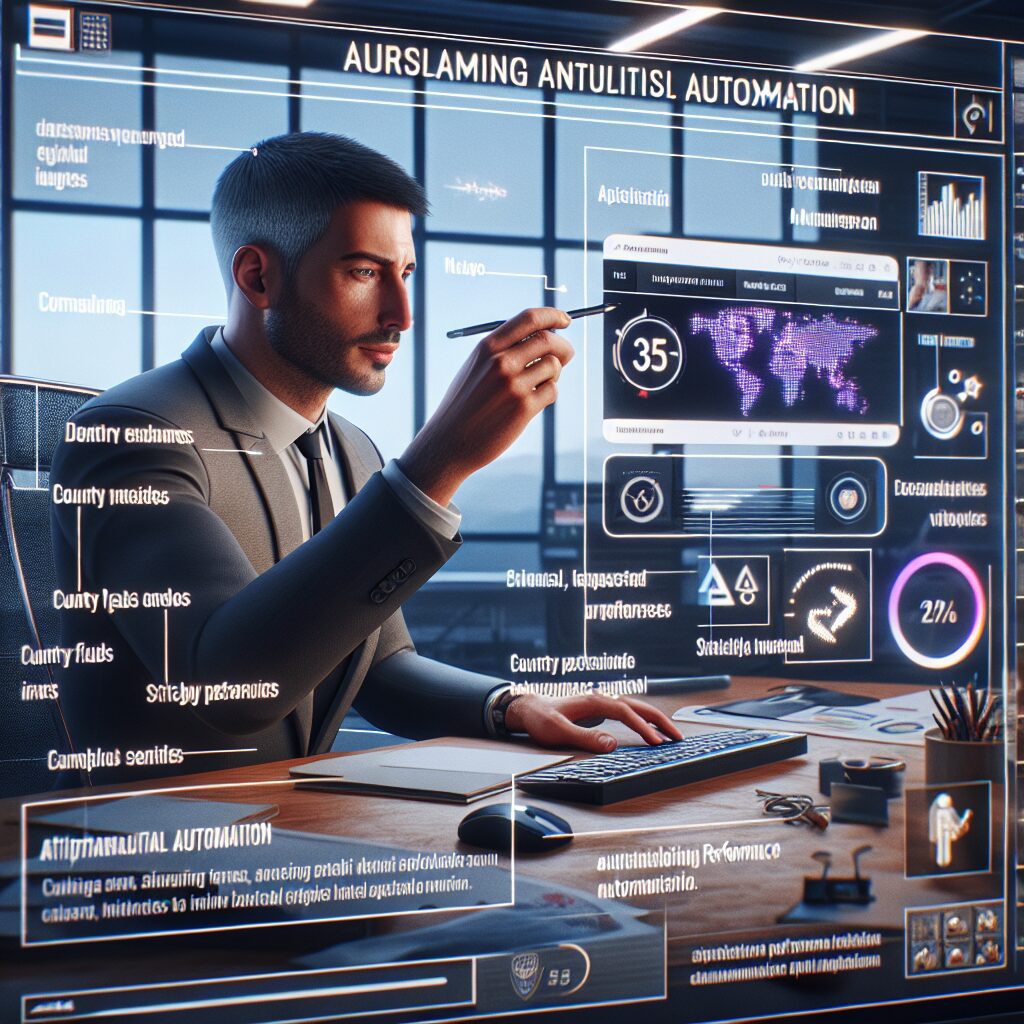About eldris
At Eldris, we automate SEO, multilingual site expansion, and EU compliance for brands scaling across Europe. Our AI-powered platform handles everything from content publishing to regulatory docs—so you don’t have to.
In This Article
- Automated website translation accelerates EU market entry.
- AI ensures high accuracy and contextual localisation.
- Solutions help maintain multilingual SEO integrity.
- Regulatory compliance is built into modern platforms.
- Optimisation post-launch drives sustainable performance.
Why Speed Matters in EU Expansion
Time-to-Market Can Be a Competitive Advantage
In the contemporary digital economy, expansion into the European Union requires more than just logistics and strategy—it requires impeccable timing. Businesses that deploy localised websites for EU markets quicker than competitors enjoy a first-mover advantage. Automated website translation allows companies to skip the traditional, time-intensive localisation cycle, enabling rapid deployment of multilingual content that aligns with local consumer expectations. Avoiding delays not only mitigates opportunity costs but also helps establish on-the-ground brand presence precisely when it matters most.

What Is Automated Website Translation?
Definition and Core Technologies
Automated website translation refers to the use of machine-driven processes—typically powered by AI and natural language processing—to translate digital content across multiple languages with minimal human intervention. This includes static website text, dynamic content, images with captions, alt tags, and even embedded scripts. Solutions often integrate directly with CMS platforms, detecting changes and automatically updating multilingual versions in real-time. Tools like translation proxies, language-detection APIs, and neural machine translation engines form the backbone of these solutions. Notably, smart platforms are designed to learn from corrections over time, continuously refining accuracy and contextuality. It is an indispensable solution for businesses aspiring to scale swiftly across diverse EU markets without sacrificing quality or consistency.
The Role of AI in Multilingual Localisation
Smart Language Detection and Instant Rendering
Artificial Intelligence has transformed the landscape of localisation. Thanks to smart language detection algorithms, visitor language preferences can be instantly recognised through browser settings, IP geolocation, or user behaviour. Automated website translation systems seamlessly render content in the appropriate language within milliseconds—avoiding lag, manual redirects, or prolonged loading times. Deep learning models also ensure contextually accurate linguistic outputs, accommodating idioms, sentence structure, and grammar rules across various European languages. For instance, AI tools differentiate between formal and informal tone usage in countries like Germany or France, where such nuances heavily influence consumer trust. These capabilities are crucial in generating native-quality experiences across borders without requiring manual input at every touchpoint.
Compliance Requirements Across EU Markets
Handling Language Laws and Data Policies
One of the most nuanced aspects of expanding into the EU is ensuring local legal and regulatory compliance. Various member states enforce strict language requirements. For example, France mandates that consumers must receive contractual and promotional content in French. Similarly, Belgium requires multilingual representation depending on regional jurisdiction. Automated website translation platforms are increasingly sophisticated, offering the capability to comply with such language mandates by default. Furthermore, the General Data Protection Regulation (GDPR) introduces another layer of complexity—requiring privacy policies, cookies notices, and terms of service to be rendered clearly in the user’s native language. Advanced automated tools now feature compliance modules that translate and localise legal documentation accurately while respecting data sovereignty requirements. Incorporating localisation and legal alignment together dramatically reduces the risk of regulatory violations.
Optimising for SEO in Multilingual Sites
Structured Data, hreflang, and Content Indexing
Implementing automated website translation effectively isn’t just a matter of language—it also has far-reaching SEO implications. Multilingual SEO necessitates careful handling of meta descriptions, alt tags, URL structures, and structured data. One core element is the use of hreflang tags, which inform search engines about regional and linguistic variations of the same page. Automated systems specially configured for multilingual SEO will generate and insert these tags accordingly. Moreover, translated versions of web content need to maintain schema markup to preserve rich search result features. Some platforms provide built-in SEO audits across all supported languages to ensure indexation, internal linking accuracy, and semantics. This multilingual SEO layer is essential for capturing organic traffic in EU countries and ensuring parity between original and translated site versions. For more on EU-specific SEO best practices, refer to Learn more about Multilingual Website Localisation & Swift EU Market Access.
How Fast Translation Enables Cross-Border Growth
Case Studies from E-commerce Brands
Global e-commerce enterprises are already leveraging automated website translation to remarkable effect. Consider the case of a Scandinavian fashion retailer expanding simultaneously into five EU countries using a SaaS localisation solution. Within weeks, their online storefronts launched fully translated, SEO-optimised versions in German, French, Italian, Spanish, and Dutch. Traffic from local searches doubled within two months, and bounce rates dropped significantly due to higher content relevance. Another example involves a home goods brand deploying AI-driven translation workflows, which enabled hyperlocal marketing campaigns in local dialects. Ultimately, translated product descriptions, customer support pages, and checkout interfaces led to improved conversion rates and increased cart value. These real-world applications demonstrate that the intersection of intelligent automation and localisation is reshaping how brands penetrate competitive regions like the EU. For additional statistics, see How localisation automation delivers results quickly.
Top Tools for Automated Website Localisation
Recommended Plugins and SaaS Platforms
Navigating the diverse toolkit available for automated website translation can be challenging. Among the leading solutions, Weglot, Lokalise, and Smartling have gained traction for their ease of integration and scalability. Many of these platforms offer seamless CMS compatibility with WordPress, Shopify, Magento, and headless CMS architectures. Features such as auto-language redirection, in-language page editing, and collaborative translation review portals make them ideal for high-growth teams. Additionally, open-source frameworks like i18next serve developers aiming for fine-grained control of localisation pipelines within JavaScript ecosystems. Many platforms today also provide APIs for automating translation of third-party content (e.g., product feeds, user reviews, and mobile apps). These tools can drastically cut resource expenditure while accelerating timelines. For an in-depth comparison of top localisation platforms, visit Ensure rapid EU regulatory compliance.
Balancing Speed with Brand Voice Accuracy
Human Review vs. Machine Precision
While automation accelerates scale, it cannot fully replicate human tone and brand personality. Maintaining brand coherence across languages requires a nuanced approach. Many enterprises adopt a hybrid model—where machine translation delivers initial output, followed by human-in-the-loop editing for critical pages such as About Us, product descriptions, and customer service scripts. This ensures precision without compromising tone. Some automated website translation platforms now include brand glossaries, tone-of-voice presets, and terminology databases that enforce consistency. Businesses must prioritise balance: overreliance on literal translations can alienate audiences, while excessive human proofreading can slow execution. The right blend ensures robust localisation while preserving the integrity of your messaging. For further tips on managing tone, visit Read a related article.
Post-Launch Optimisation Strategies
Monitoring Performance in Multiple Languages
Once a multilingual site is live, continuous optimisation becomes a priority. Tracking KPIs across linguistic versions reveals performance disparities—such as pages with lower time-on-site or higher bounce rates. This insight helps refine translation quality and identify cultural or semantic mismatches. Heatmaps, A/B testing, and multilingual keyword analysis all play critical roles post-launch. Advanced platforms offer dashboards segmented by language versions, enabling stakeholders to respond quickly. For example, if a French FAQ page receives less engagement, editors can revisit its phrasing or structure. Also, integrating AI into the feedback loop enables intelligent suggestions for improving future translations. Optimisation is not a one-off task—it’s a cycle. Regular audits, updates, and feedback integration underpin long-term success. Even aspects such as voice search adaptation and mobile layout preferences across cultures should be considered in the loop.
Overcoming Regulatory Challenges with Automation
Why Automated Translation Is EU-Ready
Automation is not merely a convenience—within the European Union, it is often a necessity due to the fragmentation of language laws and content accessibility regulations. Automated website translation platforms are engineered to meet stringent linguistic and technical standards, offering real-time compliance monitoring and automatic updates as laws evolve. Many services provide prebuilt data handling policies in varying languages, GDPR-adherent storage contracts, and user consent flows that comply with regional legislation. For public sector institutions, WCAG accessibility requirements across different languages are also critical—and platforms now incorporate these into translated content automatically. Thus, automation directly enables companies to stay legally current and accessible while avoiding penalties. It’s a proactive, scalable method to align with Europe’s diverse governance structure.
Conclusion: Next Steps for Seamless EU Localisation
In a continental market where language is the gateway to trust, adopting automated website translation is no longer optional—it is strategic. From swift deployment and legal compliance to enhanced SEO and refined brand messaging, automation empowers modern businesses to meet the demands of pan-European audiences with unprecedented speed. The technology has matured, and with the right tools and methodologies, companies can embark on expansion without sacrificing quality or efficiency. As we look ahead, the trend of intelligent localisation will only accelerate, making now the best time to invest in robust automated systems. Begin with a strategic audit of your existing site, select an appropriate platform, and build internal SOPs for review and iteration. The EU awaits—speaking many languages, but ready to listen when spoken to properly.
“Speed without strategy is costly, but strategy powered by automation wins market share.” – Senior Localisation Consultant
Great guide on automated-website-translation-fast-eu-expansion – Community Feedback
Can a website be automatically translated for EU markets?
Yes, websites can be automatically translated using AI-powered tools, enabling fast and consistent multilingual content tailored for EU audiences.
How does automated website translation enhance EU market entry?
It accelerates launch timelines by swiftly localising websites, ensuring regulatory alignment and removing manual translation bottlenecks for cross-border ecommerce brands.
What are the key benefits of using AI for translation?
AI translation provides speed, scalability, improved accuracy, and allows businesses to update content quickly across all localised sites while maintaining consistent brand messaging.








